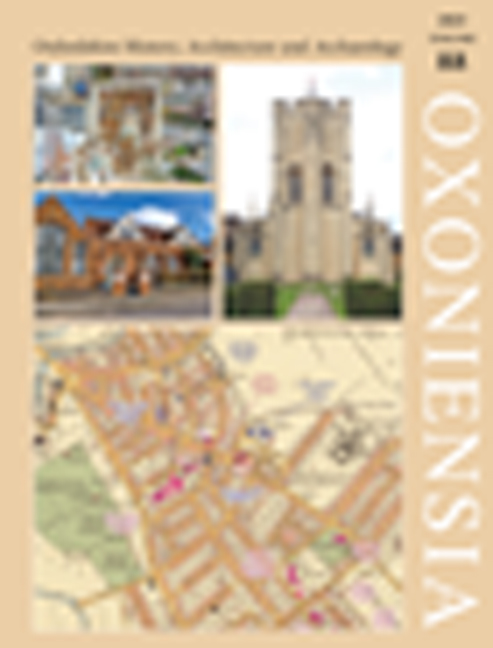The Portable Antiquities Scheme in Oxfordshire, 2022
Published online by Cambridge University Press: 15 May 2024
Summary
In 2022 the PAS logged 43,316 entries recording c.53,490 artefacts across England and Wales. The number of treasure cases continued to rise, with 1,298 cases reported from England alone. Typical activities for the scheme were almost entirely resumed following mitigations during the COVID-19 pandemic. This included organising regular finds surgeries at five museums across the county, attending metal-detecting clubs, hosting pop-up finds recording events at temporary exhibits, and hosting regular finds appointments. As a result, a larger number of individuals were brought into contact with the scheme and a higher number of finds suitable for recording were viewed. In addition, Oxfordshire was host to the first National Council for Metal Detecting-funded emergency excavation in Warborough. This was in response to the discovery of what was thought by the finder to be a possible cauldron but upon excavation was identified as a modern barrel. However, this has provided a useful case study in the use of this fund for future cases of in situ discoveries. A report is now housed in the county Historic Environment Record.
OXFORDSHIRE FINDS PROFILE
In 2022 a total of 2,249 artefacts were recorded in 2,060 records for the county. This represents a c.50 per cent increase in the number of finds found in the previous year and is nearly the same number of reports recorded for the county in 2019. This increase reflects the return to pre-pandemic activities. Fifty treasure cases were reported, thirty-eight of which were reported to the Oxfordshire FLO. This is broadly consistent with the number of cases recorded from 2019. In 2022, 160 of the county’s 323 parishes had at least one find reported from them (Fig. 1). While the overall distribution of finds is not notably different to the established distribution seen in years prior to 2022, six parishes had artefacts recorded for the first time, namely Lyneham, Rouseham, North Newington, Mollington, Hatford and Kelmscott. As a result, only seventeen parishes are now lacking any finds in the PAS database (Fig. 2).
Roman period artefacts were, once again, the most numerous finds reported in Oxfordshire, making up 52 per cent of all records from the region, followed by post-medieval and then medieval finds (Table 1). Coins make up over half the assemblage. Overall, the profile is very similar to those of all finds reported in the county since the inception of the PAS.
- Type
- Chapter
- Information
- Oxoniensia , pp. 351 - 358Publisher: Boydell & BrewerFirst published in: 2024

